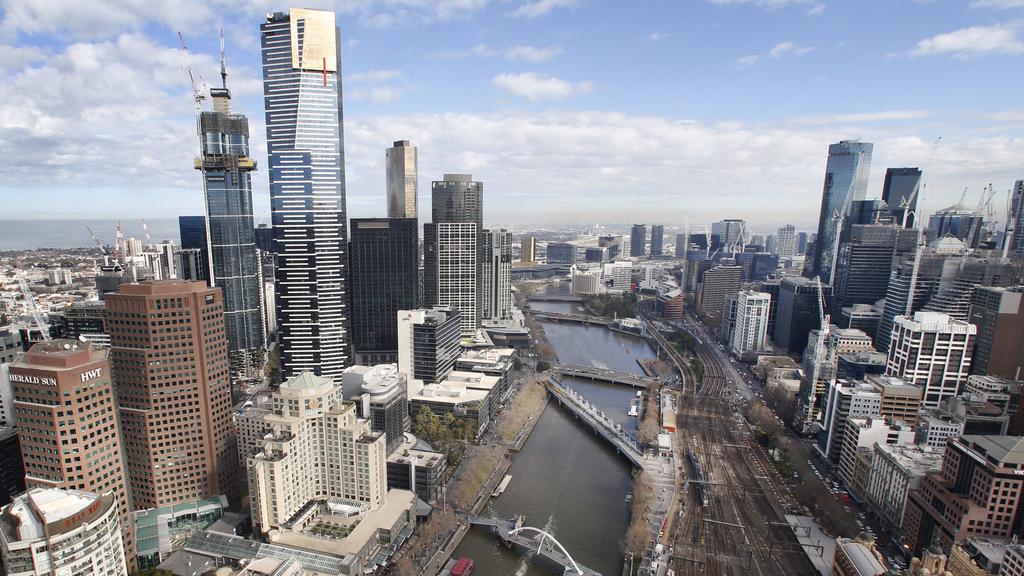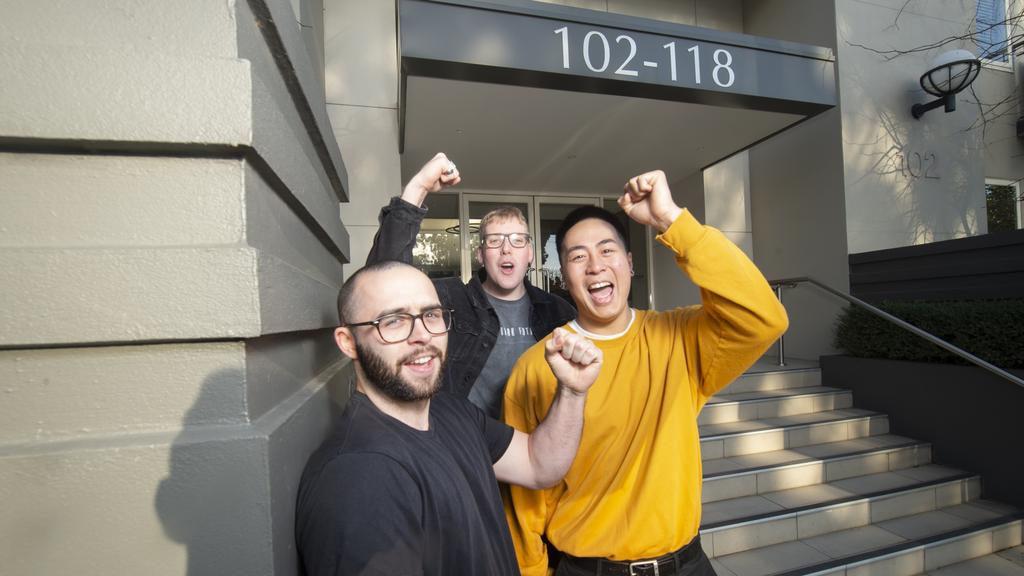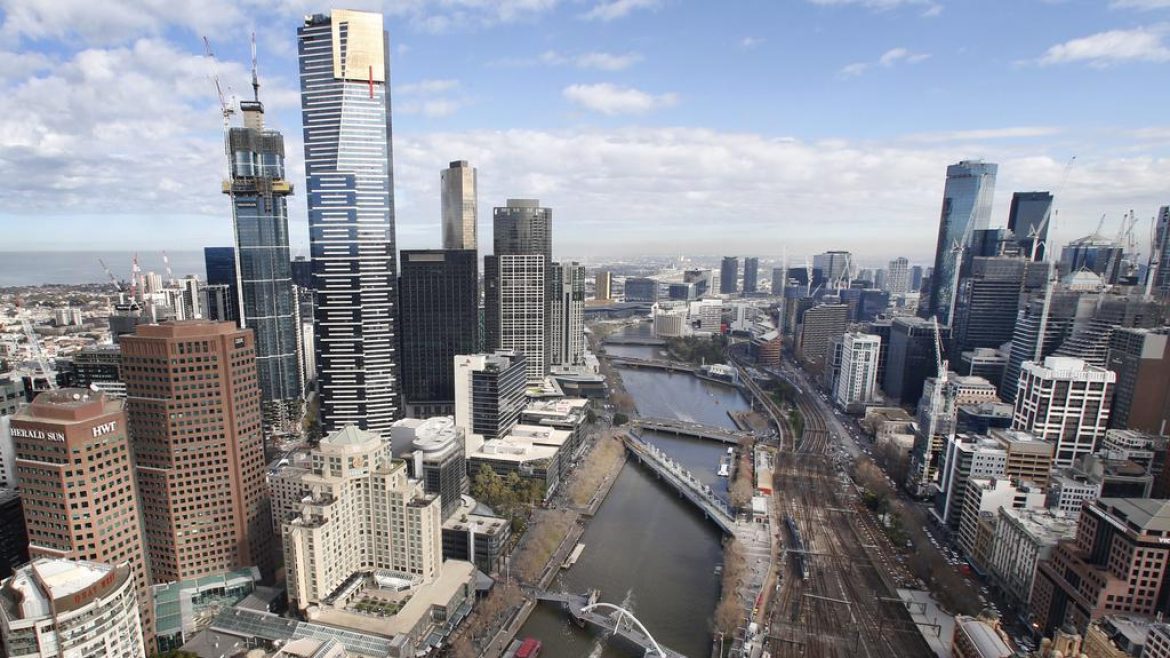
Rental values have fallen in Southbank and CBD since the onset of COVID-19. Picture: David Caird
An explosion of listings has put tenants in the box seat to negotiate lower rents in inner-Melbourne suburbs.
But cruelly, the emergence of renter’s markets in suburbs like Southbank, Docklands and Carlton has partially been driven by the plight of tenants who’ve lost income amid the COVID-19 crisis, according to ANZ and CoreLogic’s latest Housing Affordability report.
A dangerous double whammy of falling demand and rising supply has fuelled a 57 per cent jump in the volume of rentals on the inner-Melbourne market, from 7011 in March to 11,019 in June.
RELATED: Massive Melbourne rent price drops as stock piles up
‘Average hardworking landlords’ struggling with loss of rent
Rental vacancy rates improve marginally amid coronavirus
CoreLogic head of research Eliza Owen attributed this to an exodus of overseas migrants and workers in the struggling hospitality, arts and recreation sectors — groups that were more likely to rent than own — combined with Airbnb owners converting properties to long-term rentals amid a tourism drought.
Inner Melbourne’s rental stock increase was the largest of any capital city region, followed by Sydney’s city and inner south with a 53 per cent rise to 5530 listings.
Melbourne’s inner east and inner south both notched 19.7 per cent increases to have more than 2300 listings each.
The report found the stock boom had translated to hefty rental value declines in inner suburbs in the March-to-June period, with Southbank’s median falling 7 per cent to $525 per week.
The suburb had 1554 rentals on the market by June’s end, and a 16.2 per cent vacancy rate.

Tenants like Oliver Mullaney, Riley Mayne and Damien Lee are in a strong negotiating position for homes in inner-Melbourne. Picture: Rob Leeson
The CBD, where there are 2678 available rentals, notched a 6.9 per cent value drop to $528.
Docklands, Carlton, West Melbourne, North Melbourne, Parkville, East Melbourne, Port Melbourne and Albert Park each experienced price falls between 3.7-6.5 per cent, and as such were also identified as postcodes where tenants were “most likely to negotiate lower rents”.
Ms Owen said when supply outweighed demand, tenants gained “power to negotiate”. But it was important to remember affordability hadn’t improved for renters who had lost income.
She said another outcome of the rental glut was that investors were “losing interest in the
housing market”, with investor finance falling sharply in April and May.

Tenants in sectors hit hard by COVID-19 are doing it tough.
Tenants Victoria chief executive Jennifer Beveridge said renters were “over-represented in hard hit areas such as hospitality and other service jobs”.
“So what may seem to be ‘cheaper’ rent may not actually be affordable for these challenging times,” she said.
Ripponlea renter Courtney Windross said she was luckier than some, despite being stood down from the restaurant where she worked part time while completing a masters degree.
The fact the 29-year-old’s partner was working full time and receiving JobKeeper payments meant they could still afford their unit. But the couple’s plan to save to buy their own home had been “wiped out” for the time being.
“All our income covers the rent, bills and food, but there’s nothing else,” she said.
MORE: Melbourne’s best and worst performing auction suburbs during COVID-19
Succulent paradise on the market in Langwarrin South has plants worth millions
Melburnians using property as an ‘excuse’ to visit regional Victoria
Negotiating tips for tenants
— Be aware several inner-city rental markets are now oversupplied, giving tenants more choice and a position of power to negotiate from
— Work out what you can afford to pay in rent, while being aware paying 30 per cent or more of your household income (before tax) places you in “rental stress”
— Consider whether the terms of a lease, including the length, meet your needs
— Keep a written record of discussions, with negotiating via email a good idea
— Research comparable properties on the market to ascertain average asking rents in your desired area
— Remember, renters have rights and there are extra protections in place due to COVID-19
— Also consider many landlords are doing it tough
— Use resources provided by Victoria’s leading tenancy legal service at tenantsvic.org.au
Sources: Tenants Victoria, CoreLogic’s Eliza Owen
Suburbs where tenants are most likely to negotiate lower rents
Rental value decline from March to June / median rental value / number of listings in June
Southbank: 7% / $525 / 1554
Melbourne: 6.9% / $528 / 2678
Docklands: 6.5% / $547 / 661
Carlton: 5.8% / $452 / 533
West Melbourne: 5.3% / $481 / 234
North Melbourne: 4.4% / $466 / 265
Parkville: 4.2% / $446 / 88
East Melbourne: 4% / $555 / 109
Port Melbourne: 3.9% / $623 / 299
Albert Park: 3.7% / $756 / 60
Source: ANZ and CoreLogic
The post Melbourne inner suburbs become renter’s markets due to COVID-19 appeared first on realestate.com.au.

